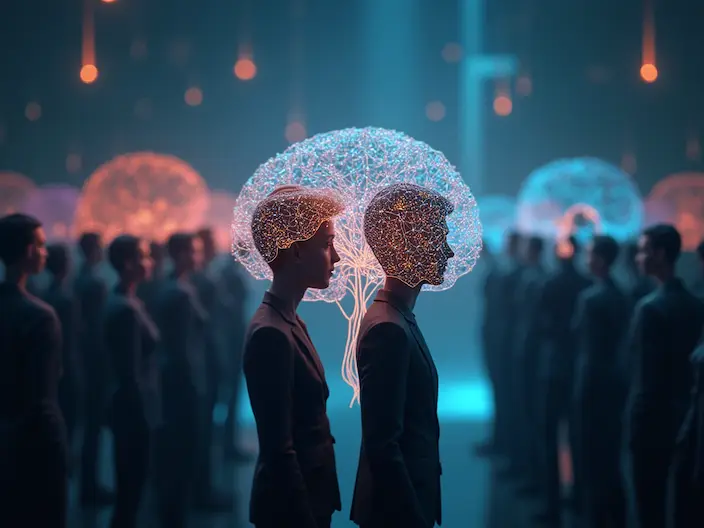-
Introduction
In today’s world, digital technologies are evolving at an unprecedented pace and reshaping human life in countless ways. Among these, the metaverse stands out as a revolutionary and emerging concept, offering a glimpse into a future where the boundaries between physical and virtual reality blur like never before. The metaverse is a multi-dimensional digital space that goes beyond traditional modes of interaction, providing a fully immersive environment for lived experiences, social connection, learning, therapy, and even cognitive transformation.
On the other hand, neuroscience is the field that studies the structure and function of the brain and nervous system. In recent decades, major advancements in neuroimaging, cognitive psychology, and neural network modeling have allowed us to study complex mental processes—like perception, memory, decision-making, and social emotions—with greater accuracy. Connecting the metaverse with neuroscience is one of the most promising steps we can take—not only to deepen our understanding of the human brain and mind but also to pave the way for tools aimed at improving cognitive and social performance.
Human interaction with the environment has always been a crucial factor in shaping identity, memory, and brain structure. But this raises an important question: what happens when that interaction shifts from the physical world to immersive digital environments like the metaverse? What are the consequences for the brain and cognition?
From a social neuroscience perspective, the human brain evolved to function optimally during face-to-face and physically co-present interactions. These include processes such as empathy, inter-brain synchrony, place attachment, and collective cognition (also known as we-mode thinking). Traditional digital environments—like social media—lack many of these crucial elements, often leading to social isolation, harmful comparisons, reduced group motivation, and weakened social capital. This is where the metaverse, with its multi-sensory environments powered by virtual reality (VR) and augmented reality (AR), offers the potential to re-activate those same neural mechanisms we use in physical interactions.
At the same time, the rise of Cognitive Enhancement Technologies—designed to improve focus, memory, social intelligence, and reduce anxiety—adds further weight to this conversation. Many of these technologies now overlap with the metaverse, directly or indirectly. Environments designed with insights from neuroscience could spark a revolution in education, therapy, and human development.
This paper aims to explore, using cutting-edge data from credible neuroscience sources and metaverse studies, how digital interactions in immersive virtual environments affect the human brain—and how these effects can be harnessed to develop cognitive and therapeutic technologies. Our focus is on comparing social experiences in the physical world, traditional digital environments, and the metaverse—ultimately seeking to answer this central question:
Can the metaverse serve as a bridge between human interaction and brain enhancement?
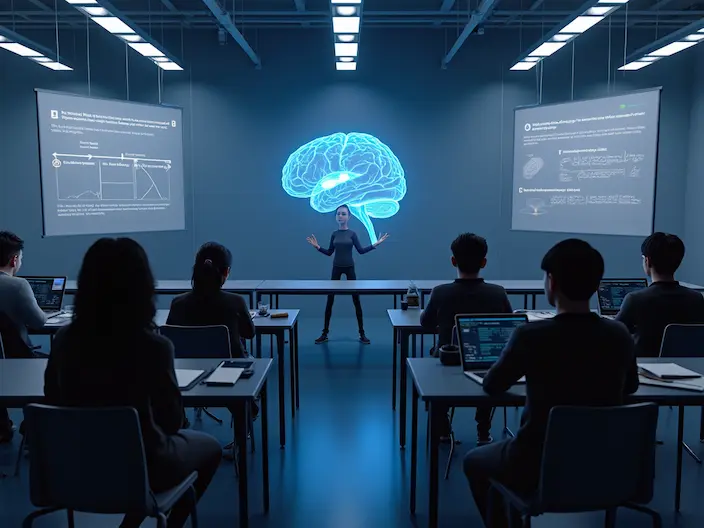
-
What Is the Metaverse and Why Does It Matter for the Human Brain?
The word “metaverse” is a combination of “meta” (meaning beyond) and “universe,” and refers to a simulated digital environment that goes beyond today’s two-dimensional internet. It offers users a three-dimensional, interactive, and multi-sensory experience. Unlike websites or social networks, users in the metaverse engage with one another in real time using digital avatars in a shared, lifelike, and continuous space. Powered by advanced technologies such as Virtual Reality (VR), Augmented Reality (AR), Brain-Computer Interfaces (BCIs), and Artificial Intelligence (AI), the metaverse provides a level of immersion that the brain perceives as nearly real.
✅ The Metaverse: More Than Just Gaming and Entertainment
entertainment. But its applications now span education, mental health, psychotherapy, personal growth, social sciences, commerce, and even spirituality and meditation. As its uses expand, researchers in neuroscience and social psychology are beginning to view the metaverse not just as a technological novelty, but as a new platform for reimagining the human experience.
🧠 The Metaverse and the Brain: Where Technology Meets Neuroscience
At the heart of this transformation lies a fundamental question: why—and how—does the metaverse matter to the human brain?
Recent studies in cognitive neuroscience reveal that the brain is essentially a prediction machine. Known as the “predictive processing” theory, it suggests that the brain constantly builds internal models of the external world to interpret and anticipate sensory input. In the metaverse, due to its rich sensory immersion, spatial movement, real-time social interaction, and immediate feedback, the brain interprets these experiences as real—because the internal models it builds align well with the external data.
In other words, the metaverse activates the same neural circuits used during real-life, face-to-face interactions. This includes:
- Activating mirror neurons when observing the actions of other avatars;
- Increasing oxytocin release during high-quality social interactions in virtual environments;
- Enhancing episodic memory through narrative-based VR experiences;
- Creating inter-brain synchrony during shared activities in the metaverse;
- Fostering a strong sense of social presence, which is crucial for identity formation and social motivation.
🧬 The Metaverse and Brain-Based Place Simulation
Neuroscience has shown that the brain responds in specific ways to meaningful or familiar places. “Place cells” in the hippocampus are responsible for processing spatial information, and our autobiographical memories are deeply linked to specific locations. The metaverse—through custom-designed interactive environments based on emotions, memories, or culture—can trigger these same spatial circuits, especially when the experience is shared with others and recreated collaboratively.
🌐 The Metaverse as a Space for Interaction, Learning, Therapy, and Cognitive Growth
- In education, metaverse classrooms can boost group attention and inter-brain synchrony, enhancing learning experiences.
- In psychotherapy and cognitive rehabilitation, the metaverse can offer safe, controlled spaces for individuals with anxiety disorders, PTSD, autism, or cognitive impairments.
- For personal development, the metaverse provides a platform for self-discovery, communication skill-building, and interactive creative experiences.
🛑 Beyond Physics, Closer to Mental Reality
Ultimately, the metaverse can be seen as a “mirror for the mind”—a cognitively and neuropsychologically designed environment that is not just a medium for digital interaction, but a space for identity formation, social learning, empathy, and even psychological restoration.
Here is the full English translation in a fluent and conversational style, as requested:
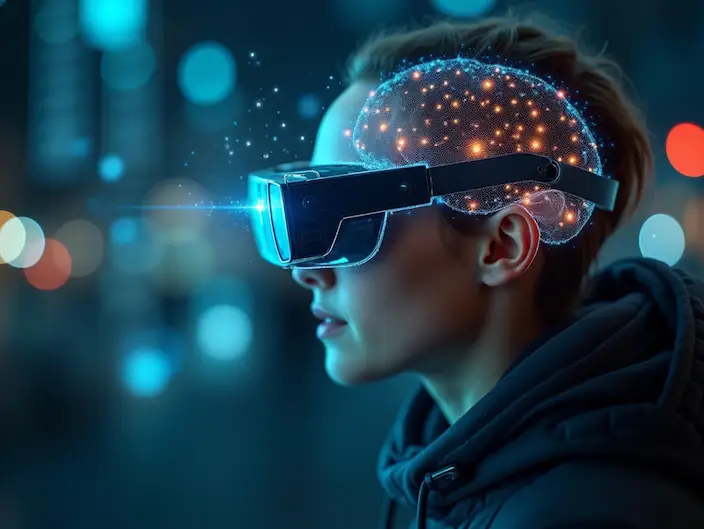
-
How Does the Brain Process Social Interactions?
From the very beginning of human evolution, the brain wasn’t designed for solitary survival—it evolved to thrive in social environments. Humans are inherently social creatures. This isn’t just a psychological cliché; it’s the result of thousands of years of neural evolution geared toward understanding, analyzing, predicting, and responding to the behavior of others. Our brains are constantly processing social information—even when we’re alone.
🧠 The “Social Brain”: The Neural Architecture of Interaction
The term “social brain” refers to a network of brain regions responsible for interpreting faces, body language, intentions, emotions, and beliefs of others. This network includes:
- Medial prefrontal cortex (mPFC): for processing the thoughts and intentions of others
- Amygdala: for identifying social threats and processing emotions
- Superior temporal sulcus (STS): for interpreting eye movements and facial expressions
- Anterior cingulate cortex (ACC): for regulating social behavior and empathy
- Mirror neuron system: for mimicking, understanding, and empathizing with others’ actions and emotions
🤝 Social Interaction: From “I” to “We” (I-mode vs. We-mode)
According to social neuroscience, human social behavior generally falls into two cognitive modes:
- I-mode (individual-focused): Even in group settings, individuals pursue personal goals. For example, sharing a cab with someone going in the same direction, without any emotional connection.
- We-mode (group-focused): Individuals adopt shared goals, see themselves as part of a collective “we,” and act in the interest of the group. Think of a sports team or an artistic collective.
Research shows that in We-mode, areas like the mPFC, amygdala, hippocampus, and middle temporal cortex become more active. This supports collective perception, empathy, cooperation, and social memory.
🧬 Key Neural Processes in Social Interaction
- 🔄 Inter-brain Synchrony:
When people engage in joint activities—like dancing, playing music, or deep conversation—their brainwaves start to synchronize. This phenomenon, called “inter-brain synchrony,” increases feelings of connection, trust, and mutual understanding. Thanks to hyperscanning technology, we can now observe this alignment in real time.
Studies have shown that brainwave synchrony in classrooms predicts student engagement and learning outcomes.
- 🤖 Mirror Neurons:
These neurons activate when we perform an action or observe someone else doing it. For instance, seeing someone cry might make us feel emotional distress. This is the neurological foundation of empathy. In the metaverse, 3D avatars and virtual eye contact can keep this system engaged. - 💞 Oxytocin and Social Bonding:
Known as the “love hormone,” oxytocin plays a key role in trust, empathy, attachment, and social belonging. Physical touch, eye contact, and even a trusted voice can boost oxytocin release. The metaverse can mimic these effects through simulated eye contact and digital proximity, prompting real emotional responses in the brain. - 🧠 Collective, Narrative-based Memory:
When people share stories or experiences as a group, their brains activate in similar regions—leading to the formation of collective memory. The metaverse, with its ability to build interactive narratives and shared spaces, can reinforce this process.
🔍 Why Understanding These Mechanisms Matters for Metaverse Design
If metaverse designers ignore these neurological processes, we may end up with just another set of ineffective social platforms. But if the metaverse is built on the principles of social and cognitive neuroscience, it can:
- Foster meaningful social connections
- Strengthen collective identity
- Enhance deep learning experiences
- Provide precise therapeutic tools for psychological disorders

-
Traditional Digital Technologies vs. the Metaverse
Over the past two decades, digital connectivity has reached unprecedented levels. Social media, messaging apps, video calls, and virtual learning platforms seem to offer endless opportunities for connection. But have these tools truly improved the quality of human and social interaction? Or have they pushed the brain toward behavioral patterns that clash with our empathic, social nature?
To answer that, we need to compare traditional digital tools and the metaverse through the lens of neuroscience.
Traditional Digital Technologies: Shallow Connections, No Brain Synchrony
Platforms like Facebook, Instagram, WhatsApp, Zoom, and YouTube are great for information exchange, entertainment, and even teamwork. But they lack depth. They’re limited to 2D screens, physical disconnection, and the absence of real sensory interaction. Most of the interaction here is reduced to:
- Text and images
- Pre-recorded audio/video
- Laggy, disjointed video calls
- Feedback through likes, emojis, or short comments
🧠 Negative Effects on the Brain in Traditional Digital Interaction
- Decreased Empathy: No eye contact or body language means mirror neurons stay inactive, reducing emotional empathy
- Increased Social Comparison: Algorithm-driven content fuels harmful comparisons, anxiety, and lower self-esteem
- Behavioral Addiction: The brain’s reward system becomes hooked on digital approval (likes, messages)
- No Collective Memory Formation: Scattered, disconnected interactions don’t create shared memories
- Lower Social Capital: Without real-time brain synchrony and genuine interaction, people feel less belonging and group cohesion
🌐 The Metaverse: Recreating Authentic Social Experiences in the Brain
In contrast, the metaverse is not just a communication tool—it’s a fully interactive, multisensory, 3D space built for real digital presence. Users live, learn, collaborate, and build shared experiences through personalized, lifelike avatars in shared virtual environments.
✅ Unique Neuroscience-Backed Features of the Metaverse
- Sense of Presence: The brain treats the metaverse environment as real, allowing for deeper cognitive engagement
- Digital Co-presence: Users exist in a shared digital “time” and “space,” enabling synchronized, lifelike interaction
- Mirror Neuron Activation: Humanlike avatars and realistic body movements engage the same neural systems as face-to-face interaction
- Enhanced Brain Synchrony: Group activities in the metaverse—like learning, dancing, or chatting—generate synchronized brainwaves
- Formation of Social Memory: Metaverse stories, visuals, places, and conversations can become collective memories—just like in the real world
- Boosted Social Motivation: Metaverse connections foster real belonging, unlike the “alone in a crowd” feeling of traditional digital spaces
⚖️ Comparative Summary: Metaverse vs. Traditional Digital Tools
| Criterion | Metaverse | Traditional Digital Technologies |
|---|---|---|
| Type of interaction | Multisensory and multidimensional interaction | Informational communication |
| Social presence | Deep and simulated presence | Weak and often artificial |
| Brain coordination | Neural synchrony in group activities | Limited or asynchronous |
| Empathy and emotions | Stimulated and enhanced | Diminished |
| Shared memory | Rich, interactive, and narrative-driven | Shallow and fragmented |
| Motivation for participation | High and stable due to sense of belonging | Fluctuating and superficial |
| Social capital | Expansive and rooted in real-life experiences | Fragile and manipulable by algorithms |
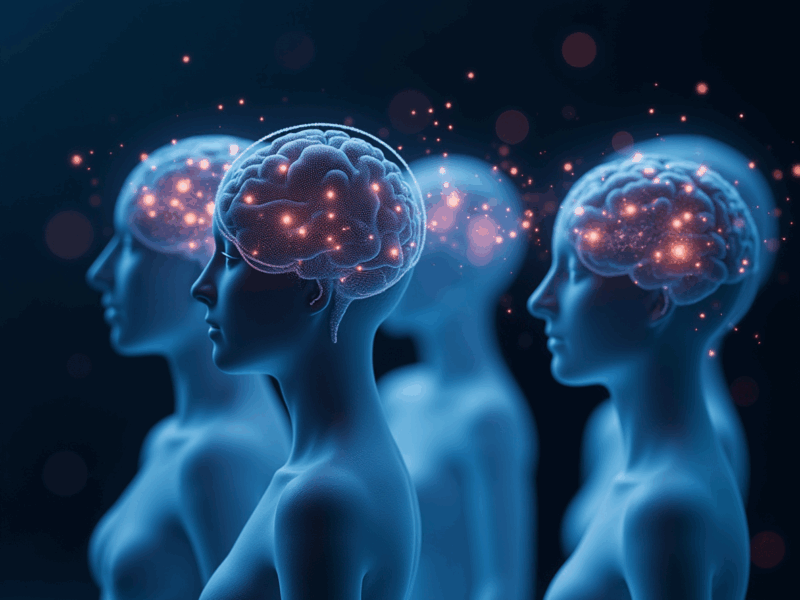
-
The Role of the Metaverse in Activating Cognitive Processes
Numerous studies show the metaverse can enhance cognition and foster positive social interaction:
- Increased empathy and social bonding through emotionally immersive VR content
- Greater inter-brain synchrony during collaborative virtual activities like games or group learning
- Elevated oxytocin levels in response to direct eye contact with avatars
- Formation of shared memories and strengthened social identity via interactive storytelling
-
The Metaverse as a Platform for Cognitive Enhancement Technologies
Today, human aspirations go beyond basic needs. There’s a growing focus on improving mental, cognitive, and psychological performance—enhancing memory, focus, creativity, self-awareness, and decision-making. Cognitive sciences aim to push the brain beyond its natural limits, and this is where the metaverse becomes a powerful platform for Cognitive Enhancement Technologies (CETs).
🧠 What Are Cognitive Enhancement Technologies?
These are tools, techniques, and interventions designed to boost executive brain functions like attention, memory, learning, emotional regulation, and problem-solving. They include:
- Non-invasive brain stimulation (e.g., tDCS, TMS)
- Neurofeedback training
- Brain-computer interfaces (BCIs)
- Targeted cognitive games
- Virtual/augmented reality with therapeutic protocols
- AI-driven personalized cognitive interventions
🎮 Why Is the Metaverse Ideal for These Technologies?
The metaverse offers a unique environment for deep cognitive engagement. Unlike flat, disconnected 2D spaces, it creates immersive, sensory-rich, emotionally engaging environments that draw the brain into deeper interaction.
✅ Key Features of the Metaverse for Cognitive Enhancement
- Full Immersion: Users feel like they’re truly inside the experience, boosting learning, focus, and memory
- Real-Time Feedback: Metaverse platforms can analyze brain and behavior data and provide instant responses
- Deep Personalization: AI and cognitive data help tailor challenges and exercises to each user
- Meaningful Social Interaction: Collaboration and competition activate cognitive processes—something the metaverse can replicate effectively
- Integration with BCIs and Sensors: EEG and other neurotech can be paired with the metaverse to read and stimulate brain activity in real-time
- Controlled Environments: The metaverse allows for fully customizable settings, ideal for precise cognitive research and intervention
🧪 Real-World Use Cases of the Metaverse in Cognitive Tech
- 🎓 Advanced Cognitive Training:
- Metaverse adventures to boost selective attention, working memory, and problem-solving
- Simulated scenarios for stress-resilient decision-making (e.g., firefighters, surgeons)
- 🧘♀️ Treating Anxiety and Cognitive Disorders:
- VR exposure therapy for PTSD
- Relaxation with neurofeedback in digital nature settings
- Enhancing cognitive flexibility in ADHD patients using real-time EEG feedback
- 🧠 Cognitive Rehabilitation Post-Injury or Stroke:
- Simulated environments like home, street, or office to restore daily functioning
- Measuring progress using cognitive and sensory parameters
- 🧑🎓 Empowering Children with Special Needs:
- Simulated social skills training for children with autism
- Improving attention and language through cognitive games
- 💼 Leadership and Emotional Intelligence Development:
- Practicing ethical decision-making and teamwork in multi-player scenarios
- Measuring emotional reactions and self-regulation in simulated conditions
⚠️ Challenges & the Need for Ethical Frameworks
Despite its benefits, the fusion of metaverse and cognitive enhancement requires ethical, legal, and technical safeguards. Key considerations include:
- Privacy of users’ neural and psychological data
- Risks of dependency or cognitive overstimulation in prolonged metaverse use
- Unethical exploitation of these technologies for commercial or military gain
- The need for continuous clinical evaluation of effectiveness

-
Ethical Challenges and Considerations in the Intersection of the Metaverse and Neuroscience
As the metaverse rapidly evolves into a core infrastructure for education, healthcare, therapy, and human interaction, a host of global concerns have emerged around its ethical, psychological, social, and even philosophical implications. While the metaverse holds remarkable potential for enhancing mental well-being, boosting cognition, and enriching social interactions, without clear ethical, regulatory, and technical frameworks, it risks becoming a space for cognitive exploitation, violation of neural privacy, and deepening social inequalities.
Below are some of the most pressing ethical challenges and considerations at the intersection of the metaverse, neuroscience, and cognitive enhancement technologies:
🧬 Neuroprivacy: The Invisible Boundaries of the Human Mind
One of the most critical concerns in the metaverse is the use of users’ neural and cognitive data. On platforms that rely on brain-computer interfaces (BCIs) or neurofeedback systems, signals from users’ brains and bodies are collected—signals that can:
- Reveal hidden intentions, unconscious reactions, or emotional states;
- Be misused for cognitive manipulation, targeted advertising, or behavioral modification.
🔴 Unlike passwords or email addresses, neural data cannot be changed. Once leaked, these signals might remain in the hands of systems or governments permanently.
📌 Ethical Recommendation: Establish global regulations to protect brain data, enforce transparency in data collection, and require informed user consent for any use.
🧠 Cognitive Manipulation: Enhancement or Control?
With the metaverse’s powerful capacity to simulate and influence the brain, the line between cognitive enhancement and cognitive manipulation becomes razor-thin. In scenarios where the metaverse can:
- Predict or steer user behavior;
- Present specific information in repetitive, emotional, or biased ways;
- Create artificial yet realistic experiences;
…the risk of generating an “imposed synthetic reality” becomes very real—a reality that conditions users cognitively instead of empowering them with awareness. This is especially concerning in areas like politics, education, advertising, and mental health.
📌 Ethical Recommendation: Ensure algorithmic transparency, allow users to exit designed experiences, and limit platforms’ autonomous control over cognitive content.
⚖️ Cognitive Equity and Equal Access
Metaverse and cognitive enhancement technologies currently come with high costs, complex infrastructure, and advanced hardware requirements, making them accessible to only a select few. This creates the risk of forming new “cognitive classes”:
- Those with access to enhancement tools (Cognitively Enhanced Elites);
- Those without, falling behind in educational, social, and professional competitions.
📌 Ethical Recommendation: Provide government support for equitable access, standardize resources, and promote public education to prevent a cognitive divide.
⚙️ Cognitive Dependence and Decline of Natural Abilities
Although the metaverse can enhance cognition, excessive and unregulated use may lead to cognitive laziness, social detachment, and deterioration of natural communication skills. Warning signs may include:
- Reduced focus in non-metaverse environments;
- Decreased real-world interactions and increased feelings of isolation;
- Greater reliance on navigational systems and weakened independent decision-making.
📌 Ethical Recommendation: Implement usage time limits, design balanced metaverse environments, and integrate cognitive activities with physical exercise and real human interaction.
🔬 Lack of Clinical Standards and Ongoing Scientific Evaluation
Many cognitive-enhancement tools currently used in the metaverse still lack full scientific and clinical validation. Without longitudinal studies, meta-analyses, and controlled trials, these tools may not only be ineffective but could also cause unintended psychological or neural side effects.
📌 Ethical Recommendation: Develop international scientific frameworks to assess the efficacy, safety, and long-term impact of such technologies.
🧩 Digital Identity and the Boundaries of Subjective Reality
With the ability to create custom avatars, choose gender, alter appearances, explore alternative narratives, and experience diverse roles, the metaverse may disrupt the development of real identity, leading to detachment from self or personality fragmentation—especially in adolescents, individuals with psychological vulnerabilities, or those seeking escape from reality.
📌 Ethical Recommendation: Offer psychological education to users, conduct clinical monitoring of long-term mental effects, and create tools to help integrate real and digital identities.
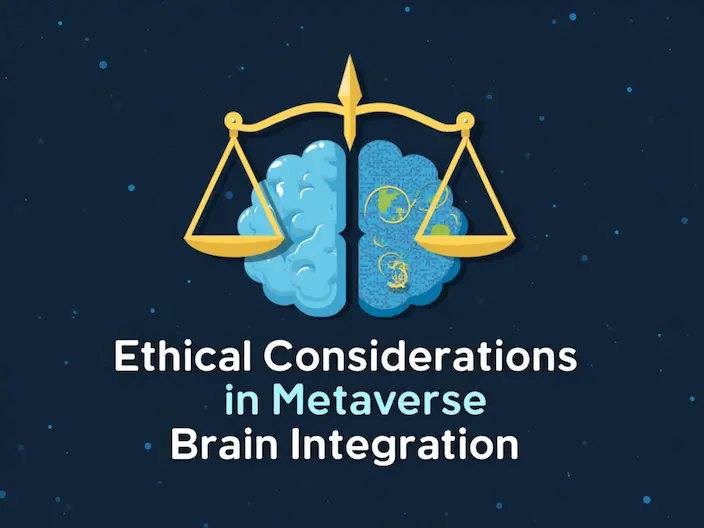
-
Conclusion and Recommendations
As we stand on the edge of a new era of human existence, the boundaries between reality, the mind, and technology are more intertwined than ever. The metaverse, one of the most transformative technologies of the 21st century, is not just a virtual space for entertainment or commerce. It is a platform that can fundamentally reshape human cognition, lived experience, learning processes, psychological treatment, social interactions—and even the structure of the brain itself.
On the other hand, cognitive and social neuroscience have shown us that the human brain is not merely a reflection of its environment but is structurally and functionally reconfigured in response to social settings, sensory experiences, and group participation. This unique convergence of neuroscience and the metaverse offers an unprecedented opportunity to redesign human experience—one that is cognitively rich, ethically grounded, and culturally meaningful.
📌 Key Takeaways:
- The human brain is built for social interaction, empathy, coordination, and shared narrative;
- Traditional digital environments (like social media) have largely failed to activate these mechanisms;
- The metaverse, through immersive 3D, interactive, multisensory spaces, has the potential to engage neuro-social structures in the brain;
- When combined with cognitive enhancement tools (like neurofeedback, BCIs, and therapeutic VR), metaverse environments can meaningfully improve cognitive functions;
- Challenges such as neuroprivacy violations, cognitive manipulation, digital discrimination, and psychological dependence require urgent ethical, legal, and scientific interventions.
✅ Strategic Recommendations
- For Neuroscientists and Cognitive Researchers:
- Focus on empirical studies and brain imaging in real metaverse environments;
- Analyze long-term effects of metaverse use on memory, attention, identity, and social brain functions;
- Develop brain assessment and feedback tools compatible with virtual platforms.
- For Metaverse Designers and Developers:
- Apply cognitive and neuroscience-based design principles in space and interaction design;
- Avoid replicating flawed patterns of social media by creating meaningful, sustainable, human-centered environments;
- Integrate features for mental health support, emotional feedback, and focused attention within user experiences.
- For Technology and Health Policymakers:
- Create ethical, legal, and security frameworks to protect users’ brain and behavioral data;
- Ensure equitable access to cognitive enhancement tools in the metaverse to prevent social and educational disparities;
- Define standards for mental and cognitive health assessment across different age groups in the metaverse.
- For Educational and Therapeutic Institutions:
- Design metaverse-based schools centered on cognitive-social learning, not just content delivery;
- Use metaverse environments to treat anxiety, autism, PTSD, and enhance cognition in older adults;
- Train teachers, psychologists, and therapists in the ethical and scientific use of metaverse tools.
🌐 A Vision Beyond Virtual Living: Toward Meaningful Digital Existence
If we see the metaverse merely as a continuation of the internet, we limit it to repetitive, shallow, consumer-driven interactions. But if we approach it through a cognitive, neural, and cultural lens, the metaverse can become a platform for awareness, personal growth, identity reinvention, and the expansion of the human mind.
In a world where subjective reality is no longer confined to physical borders, the future belongs to those who can not only survive—but thrive—within the coexistence of brain and metaverse.
Table of Contents
Toggle
